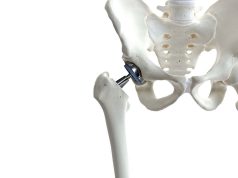Those who walked for exercise had reduced likelihood of new frequent knee pain and medial joint space narrowing
WEDNESDAY, June 8, 2022 (HealthDay News) — For adults aged 50 years and older with knee osteoarthritis, walking for exercise is associated with a reduced likelihood of new frequent knee pain and medial joint space narrowing, according to a study published online June 8 in Arthritis & Rheumatology.
Grace H. Lo, M.D., from the Baylor College of Medicine in Houston, and colleagues examined a nested cohort of participants aged 50 years or older with knee osteoarthritis, enrolled in a community-based observational study from 2004 to 2006, to assess the association between walking for exercise and symptomatic and structural progression. The authors focused on four dichotomous outcomes: new frequent knee pain, Kellgren-Lawrence grade worsening, medial joint space narrowing, and improved frequent knee pain. Walking for exercise was assessed using a modified version of the Historical Physical Activity Survey Instrument at the 96-month visit (2012 to 2014).
Seventy-three percent of the 1,212 participants walked for exercise. The researchers found that those who walked had a reduced likelihood of new frequent knee pain and medial joint space narrowing (odds ratios [95 percent confidence intervals], 0.6 [0.4 to 0.8] and 0.8 [0.6 to 1.0], respectively).
“The findings from our study provide a glimmer of hope that there may be an inexpensive intervention that modifies the structure and symptoms related to osteoarthritis, the most common type of arthritis and a source of substantial disability,” the authors write. “Beyond a benefit in symptoms for osteoarthritis, the findings from our study also suggest that walking may also provide a structural benefit for a large portion of the community with osteoarthritis.”
The study was partially funded by the pharmaceutical industry.
Copyright © 2022 HealthDay. All rights reserved.








